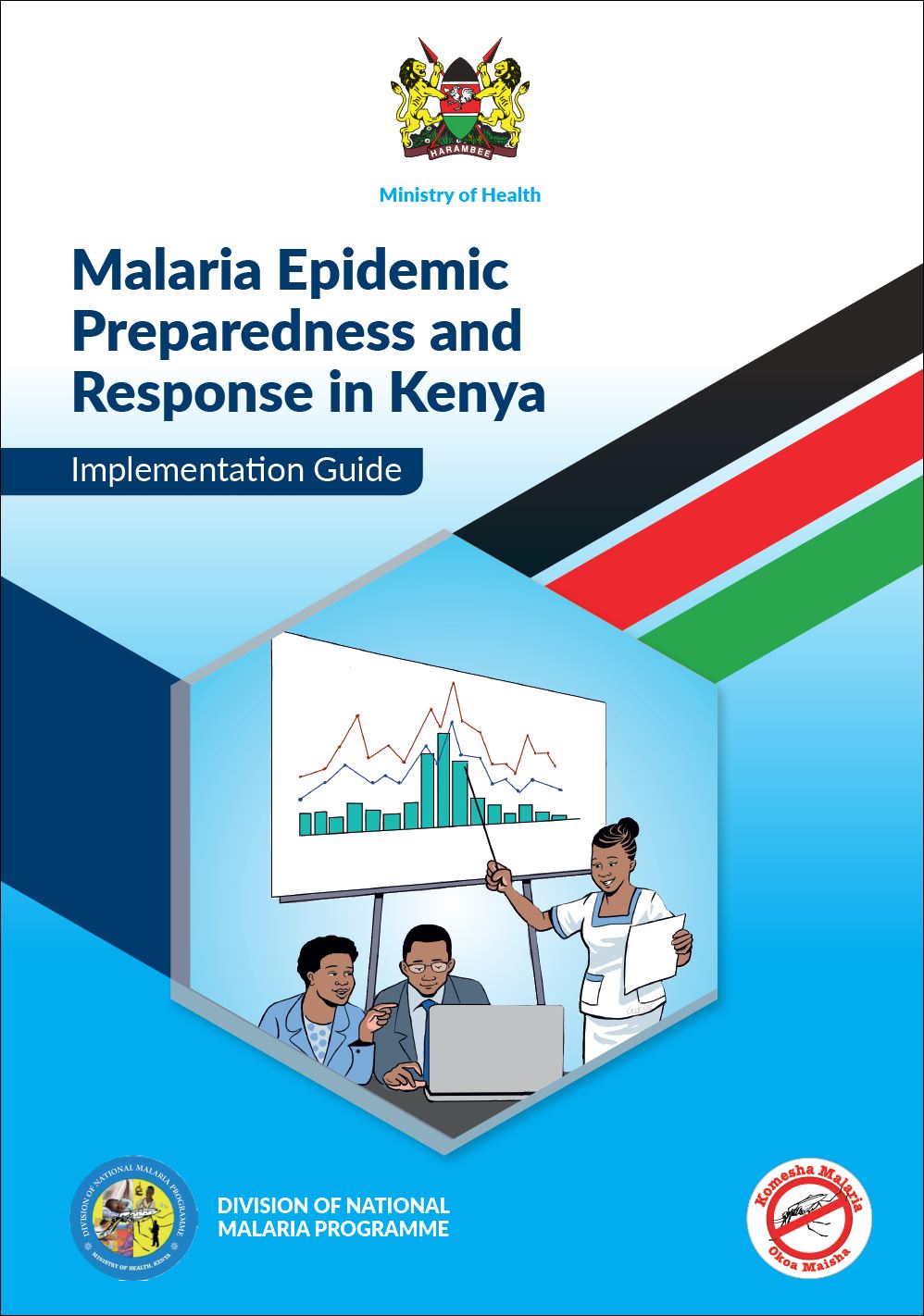Malaria Epidemic Preparedness and Response in Kenya: Implementation Guide
Download Document:
Kenya-EPR-Implementation-guide-Final.pdf (2 MB)
Kenya-EPR-Implementation-guide-Final.pdf (2 MB)

Abstract: Malaria epidemic preparedness and response (EPR) is an important strategy for malaria control, involving early detection and early deployment of response interventions to contain the epidemics. Malaria epidemics usually occur among nonimmune or semi-immune populations because of their infrequent exposure to malaria infection. Therefore, malaria epidemics tend to create an emergency that requires urgent attention to prevent high morbidity and the potential for high mortality among affected vulnerable populations.
To address malaria epidemics effectively, the health systems should be able to predict and detect the evolution of malaria epidemics and have the flexibility to respond rapidly to contain detected epidemics.
The Ministry of Health, through the Division of the National Malaria Programme and its partners, has been supporting targeted counties and sub-counties to develop capacity for malaria EPR. This approach ensures that the health management teams in the targeted counties have developed EPR plans that include resources to prepare the health workforce to respond in the event of epidemics. Since the change of governance to the devolved system in 2012, a lot of changes in the delivery of health services and, by extension, malaria control, have occurred. Consequently, previously built capacity for malaria EPR has eroded over time owing to high health worker turnover both at the management and operational levels. In view of these changes, the Division of the National Malaria Programme recognised the need to devise a mechanism for continuous capacity development for malaria EPR in all 26 counties (127 sub-counties) prone to malaria epidemics.
This implementation guide has been developed to facilitate continuous capacity development for malaria EPR at subnational levels. This capacity comprises training, planning for, and implementation of EPR activities that include prediction, detection, and effective responses to contain malaria epidemics. The implementation guide can be scoped and adapted to address the knowledge and skill needs of every level of healthcare in Kenya. The guide will be useful to all stakeholders involved in malaria control: health managers, trainers, and service providers across all levels of the healthcare system.
To address malaria epidemics effectively, the health systems should be able to predict and detect the evolution of malaria epidemics and have the flexibility to respond rapidly to contain detected epidemics.
The Ministry of Health, through the Division of the National Malaria Programme and its partners, has been supporting targeted counties and sub-counties to develop capacity for malaria EPR. This approach ensures that the health management teams in the targeted counties have developed EPR plans that include resources to prepare the health workforce to respond in the event of epidemics. Since the change of governance to the devolved system in 2012, a lot of changes in the delivery of health services and, by extension, malaria control, have occurred. Consequently, previously built capacity for malaria EPR has eroded over time owing to high health worker turnover both at the management and operational levels. In view of these changes, the Division of the National Malaria Programme recognised the need to devise a mechanism for continuous capacity development for malaria EPR in all 26 counties (127 sub-counties) prone to malaria epidemics.
This implementation guide has been developed to facilitate continuous capacity development for malaria EPR at subnational levels. This capacity comprises training, planning for, and implementation of EPR activities that include prediction, detection, and effective responses to contain malaria epidemics. The implementation guide can be scoped and adapted to address the knowledge and skill needs of every level of healthcare in Kenya. The guide will be useful to all stakeholders involved in malaria control: health managers, trainers, and service providers across all levels of the healthcare system.
Author(s): Kenya Ministry of Health
Year: 2020
Language: English